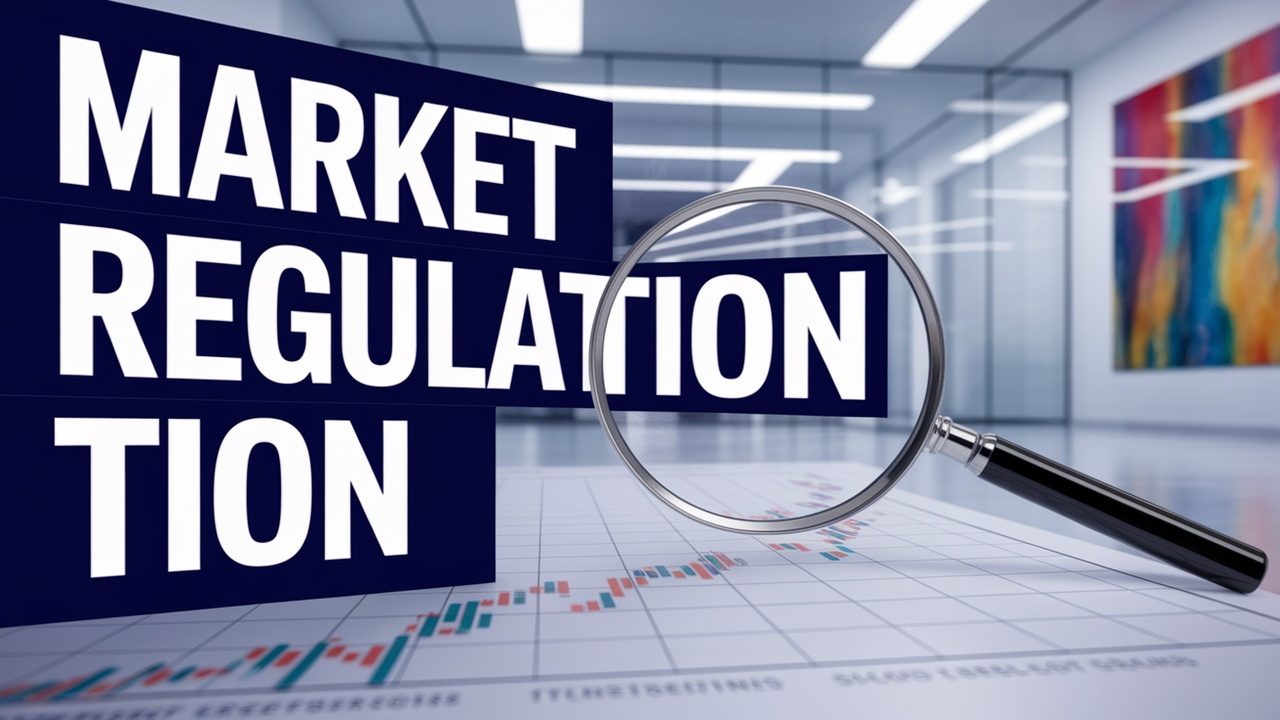MRD Full Form-Market Regnlation Department
by Shashi Gaherwar
0 1008
Introduction
Financial markets play a vital role in the global economy by facilitating capital allocation, investment, and economic growth. However, to ensure these markets function smoothly and fairly, regulatory bodies oversee their operations. Market Regulation Departments (MRDs) are responsible for enforcing rules, monitoring market activities, and protecting investors from fraudulent practices. This article explores the role of market regulation departments, their functions, challenges, and impact on financial stability.

What is a Market Regulation Department?
A Market Regulation Department (MRD) is a division within financial regulatory authorities or self-regulatory organizations (SROs) that oversees and enforces market rules. These departments work to maintain market integrity by ensuring compliance with trading laws, preventing market manipulation, and fostering a transparent trading environment.
Some key financial regulatory bodies with MRDs include:
• U.S. Securities and Exchange Commission (SEC) – Oversees securities markets in the United States.
• Financial Conduct Authority (FCA) – Regulates financial markets in the UK.
• European Securities and Markets Authority (ESMA) – Supervises financial markets across the EU.
• Securities and Exchange Board of India (SEBI) – Regulates Indian capital markets.
Functions of a Market Regulation Department
Market regulation departments perform several crucial functions to ensure fair and orderly markets. These include:
1. Market Oversight and Surveillance
MRDs continuously monitor trading activities to detect anomalies, including:
• Insider trading
• Market manipulation
• Abnormal price fluctuations
• High-frequency trading (HFT) irregularities
2. Enforcement of Trading Rules
Market regulation departments enforce compliance with laws such as:
• Anti-fraud regulations
• Short-selling restrictions
• Margin trading guidelines
• Transparency requirements for listed companies
3. Investor Protection
Protecting investors is a key priority for MRDs. They implement measures to:
• Ensure fair trading practices
• Provide accurate financial disclosures
• Prevent financial scams and fraud
• Promote investor education and awareness
4. Licensing and Registration of Market Participants
Regulators require brokers, traders, and other financial institutions to be registered and licensed. This ensures only qualified and ethical participants operate in the market.
5. Regulatory Compliance and Reporting
Market participants must adhere to compliance requirements, including:
• Financial reporting obligations
• Anti-money laundering (AML) policies
• Know Your Customer (KYC) procedures
• Risk management practices
6. Developing and Updating Market Regulations
As financial markets evolve, new risks and challenges emerge. MRDs regularly update regulations to:
• Address technological advancements (e.g., cryptocurrency trading)
• Strengthen cybersecurity measures
• Improve transparency in algorithmic trading
Importance of Market Regulation Departments
Market regulation departments are essential for maintaining financial stability and investor confidence. Their significance includes:
• Preventing Market Manipulation: By enforcing strict surveillance measures, MRDs help deter fraudulent activities.
• Enhancing Market Efficiency: A well-regulated market ensures efficient price discovery and liquidity.
• Strengthening Economic Growth: A transparent and secure financial market attracts domestic and international investment.
• Mitigating Systemic Risks: Regulatory oversight reduces the chances of market crashes and financial crises.
Challenges Faced by Market Regulation Departments
Despite their crucial role, MRDs face several challenges:
1. Technological Disruptions – The rise of digital assets, algorithmic trading, and decentralized finance (DeFi) requires updated regulatory approaches.
2. Cross-Border Market Activities – With globalized markets, regulatory coordination between jurisdictions is complex.
3. Cybersecurity Threats – Increasing cyberattacks on financial institutions demand stronger security frameworks.
4. Balancing Regulation with Market Growth – Overregulation can stifle innovation, while under-regulation can lead to financial instability.
5. Evasion of Regulations – Some market participants attempt to bypass regulatory frameworks using loopholes or offshore entities.
Future Trends in Market Regulation
As financial markets continue evolving, MRDs must adapt to emerging trends:
• Regulating Cryptocurrencies and Digital Assets – Governments are working on clear guidelines for cryptocurrency exchanges and blockchain-based financial instruments.
• Artificial Intelligence (AI) in Market Surveillance – AI-driven tools are improving fraud detection and regulatory compliance.
• Sustainable Finance Regulations – Growing emphasis on Environmental, Social, and Governance (ESG) criteria in investment practices.
• International Cooperation on Regulation – Greater collaboration between regulatory bodies to address cross-border financial activities.
• Market regulation departments play a fundamental role in ensuring financial markets remain fair, transparent, and efficient. By enforcing trading laws, monitoring market activities, and protecting investors, these departments uphold market integrity and financial stability. However, as markets evolve, regulators must adapt to emerging challenges such as technological advancements and globalization. A well-regulated financial system fosters investor confidence and supports economic growth, making the work of market regulation departments indispensable for the future of global finance.

Share:








Comments
Waiting for your comments